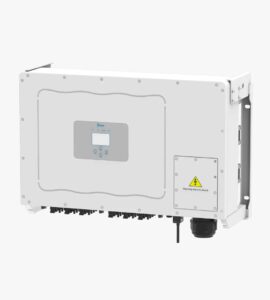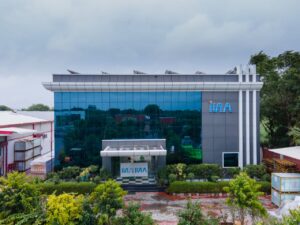 Written by- Rasa Bihari Mishra | +91 84696 27669 | rbm.innovations@gmail.com
Written by- Rasa Bihari Mishra | +91 84696 27669 | rbm.innovations@gmail.com
Waste Water Treatment is a necessity. Why?
Because most of the Industries generate Waste Water. And all of them are loaded with the pollutants and can pollute the environment. So you can’t dispose off the waste water without making them harmless to the Environment. The only solution is to treat the waste water effectively. When it comes to waste water treatment it must be Efficient.
Anaerobic Biological Waste Treatment
Aerobic Biological Waste Treatment
Efficient Treatment
Efficient waste water treatment helps in achieving the business objectives like: –
-You must be able treat the waste water effectively in order to comply with the pollution control requirements. It’s a must.
-The treatment facility must be Efficient enough to take care of the variations in the waste water getting generated.
-You need to introduce new products and new technologies for business growth. The waste water treatment must not be a constraint.
-And above all the Treatment cost must be minimum without compromising with the treatment efficiency.
You can treat the waste water using different Treatment Technologies. But when it comes to Industrial Waste Water Treatment the situation becomes difficult. Why?
Because the industrial waste water treatment is difficult. Different treatment technologies are available. But it’s tough to meet the treatment objectives. Here the Biological Waste water treatment comes to the picture. In most of the cases it can meet the treatment objectives effectively.
-It can treat large volume of waste water. It can handle variations in the quantity and characteristics very well.
-The Treatment consists of natural processes. Hazardous substances are not used. The treatment processes are environment friendly.
-The Treatment cost is less as compared to other Treatment Technologies No wonder most of the waste water treatment facilities employ Biological Treatment. But the Biological Treatment has got some limitations especially with the difficult to treat waste water.
Unless you do something about overcoming the limitations you can’t make it successful. But before getting into the details let’s know how Biological Treatment works.
How Biological Treatment Works
Biological treatment utilizes the power of microorganisms. Microorganisms are tiny organisms so small that you can’t see them with your naked eye. You’d need amicroscope to see them. The microorganisms eat away the pollutants present in the waste water. The pollutant molecules undergo biochemical processes inside the cells of the microorganisms and get converted into environmentally harmless products.
Biological treatment can be broadly divided into two categories:
Anaerobic biological treatment works in the absence of air. These micro- organisms can’t survive in the presence of oxygen. You need to ensure the absence of oxygen by carrying out the process in closed condition. Anaerobic Biological Treatment generates Biogas. The microorganisms break down the carbon compounds into Carbon Dioxide and Methane. You can use the methane in the Biogas generated during anaerobic biological treatment as fuel and save on your energy cost.
Aerobic Biological Treatment works in the presence of air. These microorganisms need oxygen to survive. So you need to maintain a minimum dissolved oxygen level by supplying air. The microorganisms break down the carbon compounds into Carbon Dioxide and water and make them harmless to the environment. But here you need to spend in energy cost in order to supply air.
Limitations of Biological Treatment
A wide variety of both aerobic and anaerobic treatment technologies are available. All of them have got their own plus and minus points. But as we’ve discussed earlier the biological treatment has limitations.
Very High Dissolved Salt Concentration
Some waste water have high level of dissolved solids – both salts and other compounds. And when the salt concentration is very high, the microorganism can’t survive due to the osmotic effects. It’s very difficult to treat this type of waste water.
Non biodegradable molecules
Anaerobic Biological Waste Treatment Aerobic Biological Waste Treatment The presence of non biodegradable molecules in the waste water makes it very difficult to use biological treatment as the microorganism can’t consume them. In addition to it these molecules inhibit their growth resulting in drastic reduction in the treatment efficiency.
Toxic Compounds in Waste Water Streams
The presence of toxic substances can kill or drastically affect the microorganisms. These compounds are toxic to the microorganisms and destroy the cellular mechanisms in them. It results in total breakdown of the treatment system. Industry professionals, research organisations and innovators are putting in massive efforts to overcome the limitations of biological waste water treatment. Newer technologies and processes are being developed.
Let’s see what options are available to us.
Get rid of the Non-biodegradable and Toxic Compounds. Ensure that the waste water is free from non biodegradable and toxic substances. It’s important. Why? Because as we’ve already discussed the non-biodegradable and toxic compounds have severe effect on the microorganisms.
Segregate the Waste Water Streams
To start with it’s better to avoid the waste water streams containing non biodegradable and toxic compounds in the biological treatment facility. You can segregate the waste water streams based on their characteristics. It’s better to separately collect the difficult to treat streams so that they can be handled separately.
Optimize the Primary Treatment
Primary waste water treatment utilizes many techniques like Waste Stream Neutralization, Flocculation, Clarification, Chemical Precipitation and so on. During these processes many pollutants get in solubilized. In fact proper selection of Primary Treatment can reduce the pollutant load significantly. And if it results in the removal of the non-biodegradable and toxic compounds the waste water treatment becomes costeficient.
Use Non Biological Treatment Technologies for Partial Treatment You can think of Non-Biological Treatment technologies only when nothing works. Because they’re economically not at all attractive. But because of their non biological nature they’re effective in treating the waste streams which biological treatment finds difficult.
It’s better to use these technologies for the partial treatment. It’s easier to treat the waste water partially and It results in lowering down the treatment cost. Partial treatment helps in making the waste water streams suitable for biological treatment.
Acclimatization of the Biomass
Different types of microorganisms take part in biological treatment processes. Their growth as well as performance depend on many physical and chemical parameters. Fortunately biology has many ways to adjust to the environment. And these micro creatures learn how to deal with the day to day variations in waste water characteristics. When the only food available for them is those unpalatable compounds – the only option remains for them is to use them in order to survive. And they develop the internal biochemical mechanism in them to metabolize the non-biodegradable and toxic molecules. This is what is biomass acclimatization. Systematic procedures are available to achieve effective biomass acclimatization in the waste water treatment facilities. It results in significant improvements in the treatment efficiency.
Specially Developed Microorganisms
Microorganisms are different. Some microorganisms can eat away difficult to treat pollutants with ease while others find it difficult to even survive. What if you’re able to develop these super microorganisms? It’ll solve much of your treatment problems. Isn’t it?
We’ve already discussed how biomass acclimatization results in improving the microorganisms. But there’s another extremely powerful way to achieve far better results. You can use the power of advanced technology to develop the internal biochemical mechanisms of the microorganisms very fast.
The idea here is to select and develop the microorganism and convert them into super organisms capable of eating non biodegradable and extremely toxic compounds.
These technologies can make it happen in days, which the nature takes years to accomplish. They can be developed for different pollutants. You can augment the biomass of your waste water treatment plant with suitable super microorganisms and achieve incredible results.
Other Technical Innovations
Optimization of waste water treatment technologies is a knowledge intensive initiative. Looking to the wide variations in the waste water quantities and characteristics a number of Technical Innovation Initiatives are being applied.
Some of ideas being tried are:
-Maintaining Very High Active Biomass Concentration has got it’s own advantages. It’ll not only make the treatment faster and better but also treat the difficult to treat pollutants in a much better way.
-High pressure Aerobic Treatment technologies are taking the advantage of higher dissolved oxygen concentration to intensify the processes.
-Innovative systems are done to utilize different types of microorganisms in an optimized way to make the Treatment Effective.
-Developing highly dense biomass granules are helping in enhancing the treatment efficiency significantly.
-Effective usage of membranes in the waste water treatment process is resulting in major improvements.
How to Make Biological Treatment Efficient
It’s not enough to have a well designed biological waste water treatment facility. Why? Because unless you operate the treatment facility efficiently neither you’ll be able to comply with the pollution control requirements nor control the waste treatment cost.
Variations in Waste Water Quantity and Characteristics
When it comes to waste water treatment the operation is challenging. Day to day operations of your manufacturing facility results in large variations in the quantity and characteristics of the waste water streams. There’s another more important aspect. In today’s competitive business environment process improvements have become common. I order to retain the leadership position in the market you’ve to introduce new products and implement improved manufacturing processes. And you’ve to expand and modify the manufacturing facility.
All these initiatives are no doubt essential for business sustainability. But there’ll be large impact on the waste generation. And you won’t like your waste water treatment facility to be a constraint. Isn’t it?
So you need to ensure that your waste water treatment facility is properly designed. But first you need to decide on the waste treatment processes. Here the Treatability Study comes to your help.
Treatability Study
Treatability Study is very effective in selecting the right waste water treatment technologies. Here you do the laboratory experimentations to see which treatment processes are working and which are not. In case of biological treatment you can check the effect of the actual waste water on the microorganisms. Whether the microorganisms are able to treat the waste streams? It helps in optimizing the treatment processes for the actual waste water.
Waste Water Treatment Pilot plant
Testing the waste water in the laboratory for the treatability provides wealth of information so that you can select the right treatment processes and design an efficient waste treatment plant. But when it comes to deal with the daily variations in the quantity and characteristics of the waste water streams, you need something similar to your waste water treatment plant. So that you can experiment at small scale. Here a well designed waste water treatment pilot plant becomes much helpful.
Let’s Conclude
As we’ve already discussed an integrated approach is essential to make the biological waste water treatment successful. The manufacturing processes have significant impact on the quantity and characteristics of the waste water. That’s why close coordination between the production, process development, process engineering and environmental functions becomes necessary.
The integrated environmental management need to include:
-Detailed study of the manufacturing processes with respect to the waste water generation is necessary. You can conduct Treatability Study which will be of great help in designing, expanding, and modifying the waste water treatment facility.
-Regular monitoring of the waste water generation and the operation of the treatment facility is essential.
-A well designed waste water treatment pilot plant can help you achieve major improvements. It’s necessary to prepare the organization for the future.
-You can initiate an Integrated Evaluation and Enhancement study to Optimize the Environmental Management system.
-Conducting periodic Technical Training Programs can help in making the industry professionals knowledgeable. It’ll help them in not only operating the plant efficiently but also making significant contributions in the organizational growth.






